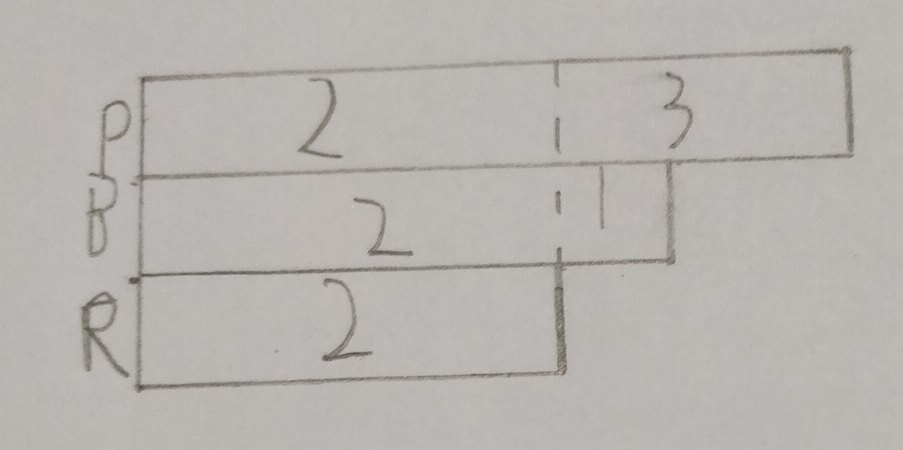Copyright © University of Cambridge. All rights reserved.
'Eggs in Baskets' printed from https://nrich.maths.org/
Show menu
Thank you to everyone who sent in a solution. This is a problem which can be solved in several different ways.
Rachel, from Burrough Green, drew this bar model to help her solve the problem:

Rachel explained how she found her answer:
I worked out how much I needed to take away from 10, that was 4. Then I divided 6 by 3, that was 2. Next I added the ones that I had taken away to the right baskets. The pink basket had 5 eggs, the brown basket had 3 eggs and the red basket had 2 eggs.
Well done, Rachel!
Some of you tried out numbers in a logical way until you found the ones that worked, like Erika from East Bergholt High School who wrote:
If there was 1 egg in the brown basket, no eggs in the red basket and 3 eggs in the pink basket, that would only make 4 eggs.
If there were 2 eggs in the brown basket, 1 egg in the red basket and 4 eggs in the pink basket, this only makes 7 eggs.
So finally, if there were 3 eggs in the brown basket, 2 eggs in the red basket and 5 eggs in the pink basket, there would be 10 eggs altogether.
Absolutely correct - thank you Erika.
Phoebe, Alice and Luke from Cambridge also did the problem in this kind of way, but they used counters to help them. Their Dad explained how they went about finding the solution:
Each had a piece of A4 paper and a pencil which was coloured either red, brown or pink. They drew a basket on their paper in the colour they had been given. They had 10 counters between them to represent the eggs. Phoebe read out the conditions and they started with 4 counters in the red basket, 4 in the brown and 2 in the pink. However, they knew this didn't satisfy the first condition (that the brown basket had to have one more egg than the red) so Alice moved one counter from the red basket to the brown basket. But they soon realised that now there were 5 in the brown and only 3 in the red, so still the first condition wasn't satisfied. The three of them talked about it more and took one counter out of the brown basket, so now there were 4 in the brown and 3 in each of the red and the pink. However, this didn't satisfy the second condition (that the red has three less than the pink). After playing around with the counters a bit more, they eventually found the solution - the red basket has 2 eggs, the brown basket has 3 eggs and the pink has 5.
Well done! It can be a very good idea to use some sort of "equipment" to help answer problems.
Jas from Greenpark Combined School solved the problem algebraically:
Red basket = n eggs
Brown basket = n+1 eggs
Pink basket = n+3 eggs
Total eggs = 10, so
n + (n+1) + (n+3) = 10
3n + 4 = 10
3n = 6
n = 2
So, brown basket - 3eggs
red basket - 2 eggs
pink basket - 5 eggs
Also, a very clear solution. Well done.